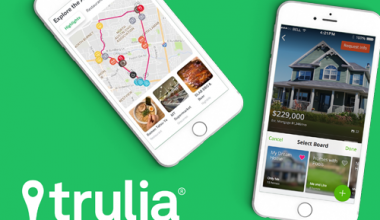Soon the iPhone, and presumably the iPad, will carry advertising embedded in their applications.
For ABC fans it sounds like a nightmare, and it’s great news for the ABC itself, since its app will remain ad-free. But in fact it’s great news all round: it means high-quality commercial publishing may yet live, not die under the benign, democratic, jackboot of Google.
The true genius of the iPhone, as well as any potential the iPad might have to change the world of publishing, lies in the invention of the application – something that didn’t really become clear until well after the iPhone was released in 2007 and the new app development industry really started hitting its straps.
It’s also a demonstration of the enduring power of great distribution to foster great content. We are learning that distribution is king (not content) but content is the monarch’s prime minister.
Apple created a seamless distribution system with the iPhone and the app store and now 185,000 apps have been created and 4 billion have been downloaded.
I’m now used to reading books on the iPhone. One app has 23,000 free books that are out of copyright that can be quickly downloaded and easily read, while another, Kobo, sells new releases.
So I’m reading books and newspapers, watching TV, playing Scrabble, doing my banking, running my calendar, looking for restaurants, checking the footy scores all through apps on my iPhone. The iPhone is becoming more and more essential every day, thanks to the apps.
The price range of the apps is huge – from zero to $70 (that I know of, for a GPS navigation system) – and some apps are asking for a monthly subscription (not very successfully I suspect).
In a couple of months Apple will launch a series of changes to the iPhone system that will take this system to the next stage, including embedded advertising.
When Apple’s new operating system for the iPhone, OS4, is released soon, it will contain what Apple calls iAd – an advertising platform that will allow app developers to put ads into their applications.
The most popular apps are free, or very cheap, which means no-one is making much money. But it turns it was a kind of Trojan horse strategy – either deliberate or not.
As Apple chief Steve Jobs said when he announced iAd a week ago: “The average iPhone user spends around 30 minutes a day using apps. Now, if we said we wanted to put an ad up every three minutes, that would be 10 ads per device per day. We’re going to soon have 100 million devices [running the iPhone OS]. That’s a billion ad opportunities per day in the iPhone and iPod touch community.”
Publishers thought the internet would be a Trojan horse as well – that they would give the content away for a while and then when everyone was hooked, start charging. But that didn’t work because, as I wrote on Friday in Business Spectator, content is not king, as they thought.
Presumably iAd will work on Apple’s new tablet machines as well, so publishers will be able to replicate and then enhance their traditional business model – charging for the content and putting advertising with it – on two devices, one large and one small.
Consumers will take their pick: one device that includes a phone and goes in your pocket, but has a small screen, or carrying an extra device with a big screen that’s easier to read. Maybe the iPad will eventually be a phone as well, so you just need that.
iAd is a direct assault on Google, or rather it completes the assault that began with the invention of the iPhone and continues with the iPad. Apps are simply a better and more reliable way to get content than the internet browsers on which Google relies.
More importantly, it turned out to be very difficult for a content vendor to make a living selling material of any value in a browser on the internet, distributed by Google.
Rupert Murdoch complains that Google “steals” the content, which is silly, but the effect is the same: content is being distributed for free.
The app store is now becoming much more analogous to the print distribution system that Murdoch grew up with, except for one thing: the barrier to entry into the system is very low, which means prices will be lower.
But at least they won’t have to be zero, and the publishing market will be able to find a new equilibrium that will support decent content.
Apple is taking a big risk, however, in making it a closed system. The new OS4 tightens controls so application developers can use no third party tools and software – mainly designed to prevent them using Adobe’s Flash system.
Jobs is once again betting that his fully integrated product design will prevail against an open platform.
It’s a repeat of the battle that Apple and Microsoft waged in the 1980s, which Microsoft won. This time Google’s Android smart phone operating system and Adobe’s Flash are taking the role of Microsoft.
Jobs is betting that, this time, his devices, the apps and the app store are a sufficiently unique distribution system to give Apple a decisive advantage. With iAd as well, he could be right.
The battle between Google and Adobe’s open system and Apple’s closed one will be a king War of the Worlds. At this stage Apple has the advantage, but that’s how it seemed earlier in the fight between it and Microsoft, until the cheap manufacturers of Asia drove down the prices of clone PCs.
This time manufacturing cost is not an issue – it’s all about distribution of content. And Google doesn’t have iTunes or an app store that channels money to those who make the content.
Resource:
http://www.abc.net.au/news/stories/2010/04/12/2869846.htm



